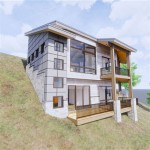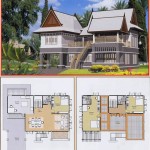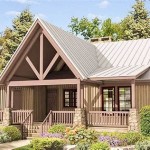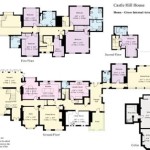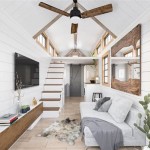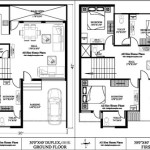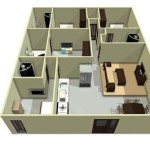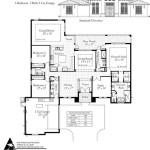House Plans for Sloped Lots in the Rear
Building on a sloped lot presents unique challenges and opportunities, particularly when the slope is located at the rear of the property. Choosing the right house plan is crucial to maximizing the potential of the site and minimizing construction costs. This article explores key considerations for selecting and adapting house plans for lots that slope downward at the back.
Understanding the Challenges and Advantages of a Rear Sloping Lot
Rear sloping lots can be more complex to build on than flat lots, requiring careful planning and execution. However, they also offer unique advantages that can be leveraged with the right design.
Key Challenges:
- Foundation design and excavation complexity.
- Water management and drainage concerns.
- Potential for soil erosion and instability.
- Difficulty integrating outdoor living spaces.
Key Advantages:
- Opportunities for walk-out basements and lower-level patios.
- Potential for stunning views from elevated living areas.
- Enhanced privacy from neighbors behind the property.
- Unique and visually interesting architectural possibilities.
Essential Design Considerations for Rear Sloping Lot House Plans
Choosing a house plan for a rear sloping lot requires careful consideration of several factors to ensure the design complements the topography and maximizes its benefits.
Key Design Considerations:
- Orientation of the house to maximize views and natural light.
- Incorporation of retaining walls and terraces to manage the slope.
- Strategic placement of windows and doors for ventilation and access.
- Selection of appropriate foundation type (e.g., stepped, pier and beam).
- Integration of drainage systems to prevent water accumulation.
Popular House Styles for Rear Sloping Lots
Certain architectural styles are particularly well-suited to rear sloping lots, allowing for seamless integration with the terrain and efficient use of space.
Suitable House Styles:
- Split-level homes: These designs naturally accommodate changes in elevation, creating distinct living zones.
- Contemporary homes: Open floor plans and large windows can maximize views and natural light.
- Ranch homes with walkout basements: These offer convenient access to the backyard and potential for additional living space.
Adapting Existing House Plans for a Rear Sloped Lot
While some house plans are specifically designed for sloping lots, it's often possible to adapt existing plans to suit the terrain. This involves working with an architect or structural engineer to modify the design.
Key Adaptations:
- Adjusting the foundation design to accommodate the slope.
- Modifying the floor plan to create stepped levels or split levels.
- Adding retaining walls and terraces to manage the grade.
- Redesigning the roofline to complement the slope and maximize views.
Working with Architects and Builders
Collaborating with experienced professionals is essential for successful construction on a rear sloping lot. Architects and builders can offer valuable expertise in design, engineering, and construction.
Key Professional Contributions:
- Site analysis and evaluation to determine the best building location and orientation.
- Development of customized house plans or adaptation of existing plans.
- Engineering solutions for foundation design, retaining walls, and drainage.
- Project management and construction oversight to ensure quality and adherence to budget.
Landscaping Considerations for Rear Sloping Lots
Landscaping plays a vital role in enhancing the aesthetics and functionality of a rear sloping lot. Careful planning can help integrate the house with the natural surroundings and create usable outdoor spaces.
Key Landscaping Considerations:
- Planting drought-tolerant vegetation to minimize maintenance and prevent erosion.
- Incorporating pathways, stairs, and ramps for easy access across different levels.
- Utilizing retaining walls and terraces to create level areas for patios and gardens.
- Installing outdoor lighting to enhance safety and highlight landscaping features.
Cost Considerations for Building on a Rear Sloping Lot
Building on a rear sloping lot can sometimes be more expensive than building on a flat lot. However, with careful planning and budgeting, the added costs can be managed effectively.
Key Cost Factors:
- Excavation and site preparation.
- Foundation design and construction.
- Retaining walls and drainage systems.
- Landscaping and site improvements.
Regulations and Permits for Building on a Rear Sloping Lot
Before commencing construction, it's essential to understand local building codes and obtain the necessary permits. Regulations may vary depending on the location and the severity of the slope.
Key Regulatory Considerations:
- Zoning restrictions and setback requirements.
- Grading permits and erosion control regulations.
- Building codes related to foundation design and structural integrity.
- Septic system requirements and stormwater management regulations.

Plan 64452sc House For A Rear Sloping Lot Architectural Design Plans Architecture

Plan 64452sc House For A Rear Sloping Lot Architectural Design Plans Lake

Plan 012h 0025 The House

Plan 85325ms 3 Bed Modern House For The Rear Sloping Lot Lake Plans

Plan 85325ms 3 Bed Modern House For The Rear Sloping Lot Lake

A Guide To Sloping Lot House Plans

Plan 280059jwd Modern Ranch Home For A Rear Sloping Lot House Plans

House Plans For A Sloped Lot Dfd Blog

Sloped Lot House Plans Down Slope The Designers

Best Simple Sloped Lot House Plans And Hillside Cottage

